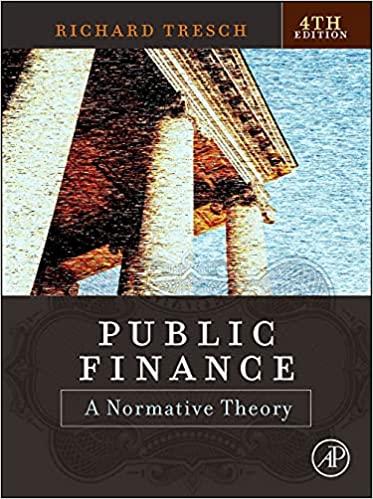Question
For this week's Discussion, provide an answer to the case study questions with a recommendation. Case Study: The Exceptional Service Grading Company requires a capital
For this week's Discussion, provide an answer to the case study questions with a recommendation.
Case Study:
The Exceptional Service Grading Company requires a capital infusion of $500,000. It is currently a closely held corporation with less than 25 shareholders. Although the shareholders are not all related to each other, they all know each other, and they view the business as a family business. The financial statements should be familiar to you because you performed a basic financial analysis of the company in Unit 1 of this course.
Several alternatives are available to the company, consisting of the following:
- Obtain private debt financing
- Seek out a private investor(s) who would be willing to share ownership (private transfer of partial ownership)
- Seek out offers for a private buy-out (private transfer of entire ownership)
- Issue public debt (corporate bonds)
- Issue public common stock (public equity offering)
Briefly discuss each alternative and include implications to the companys capital structure and cost of capital, if any. Considering the size of the investment ($500,000 infusion), provide a conclusion on how it might impact the financial statement reviewed in Unit 1. No calculations are required.
| Balance Sheet items | 2018 | 2017 | |||||
| CURRENT ASSETS | |||||||
| Cash | 456,500 | 222,400 | Cash increase - due to no dividends paid in 2018 | ||||
| Receivables | 3,936,400 | 3,320,000 | |||||
| Inventory | 89,800 | 100,200 | |||||
| Other assets | 1,169,500 | 934,300 | |||||
| Total current assets | 5,652,200 | 4,576,900 | Current ratio 2017: | ||||
| Current ratio 2018: | |||||||
| LONG TERM ASSETS | |||||||
| Note Receivable | 380,600 | 280,700 | Some additional debt acquired in 2018 | ||||
| Equipment (net of depreciation) | 975,000 | 1,017,800 | |||||
| Total long term assets | 1,355,600 | 1,298,500 | |||||
| TOTAL ASSETS | 7,007,800 | 5,875,400 | |||||
| LIABILITIES AND STOCKHOLDERS' EQUITY | Debt ratio 2017: | ||||||
| Debt ratio 2018: | |||||||
| CURRENT LIABILITIES | |||||||
| Accounts payable | 2,783,100 | 2,805,700 | |||||
| Note payable (current maturities) | 277,550 | 272,550 | |||||
| Other accrued liabilities | 265,300 | 214,600 | |||||
| Total current liabilities | 3,325,950 | 3,292,850 | |||||
| LONG TERM LIABILITIES | |||||||
| Notes payable (long term) | 454,800 | 454,800 | |||||
| Long term accrued liabilities | 389,550 | 320,250 | |||||
| Total long term liabilities | 844,350 | 775,050 | |||||
| TOTAL LIABILITIES | 4,170,300 | 4,067,900 | |||||
| STOCKHOLDERS' EQUITY | |||||||
| Common stock | 450,000 | 450,000 | |||||
| Retained Earnings | 2,387,500 | 1,357,500 | |||||
| Total stockholders' equity | 2,837,500
| 1,807,500 | |||||
| TOTAL LIABILITIES AND STOCKHOLDERS EQUITY | 7,007,800 | 5,875,400 | |||||
Step by Step Solution
There are 3 Steps involved in it
Step: 1

Get Instant Access to Expert-Tailored Solutions
See step-by-step solutions with expert insights and AI powered tools for academic success
Step: 2

Step: 3

Ace Your Homework with AI
Get the answers you need in no time with our AI-driven, step-by-step assistance
Get Started


